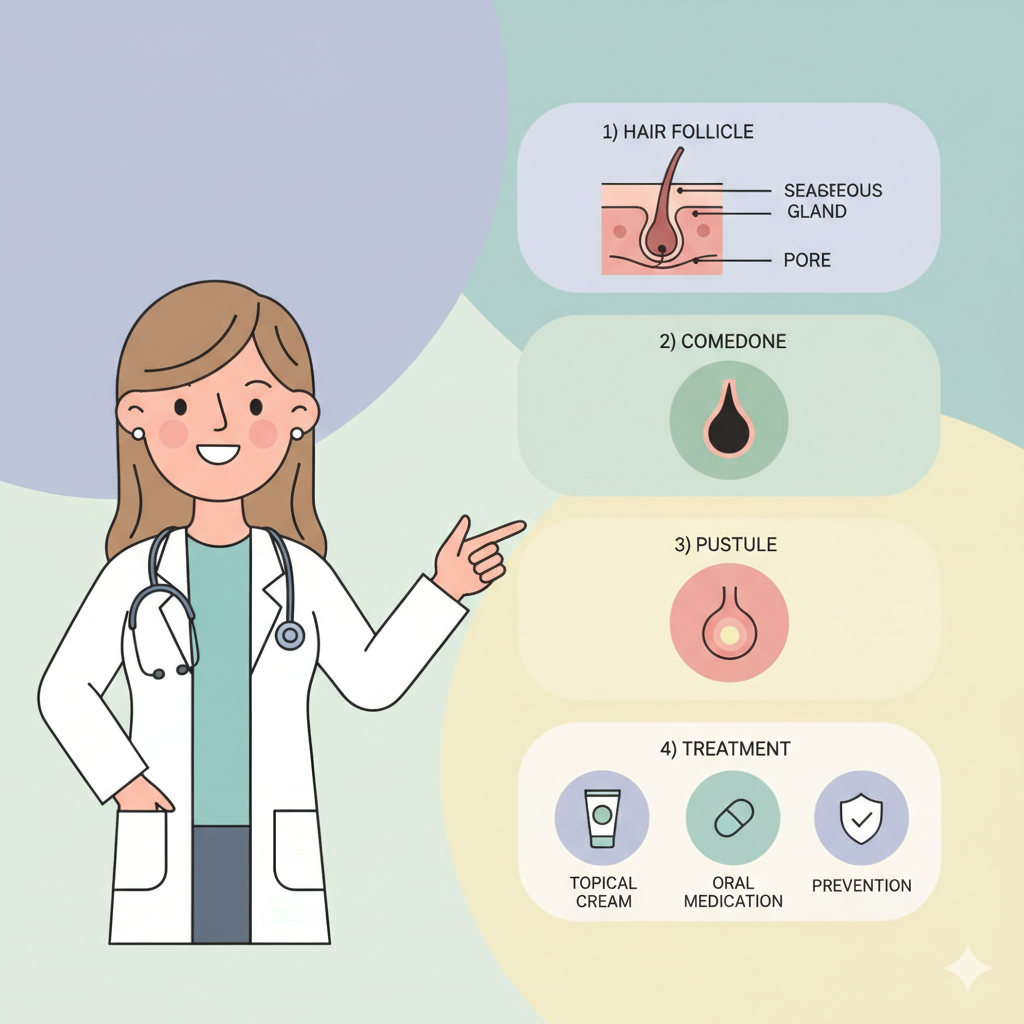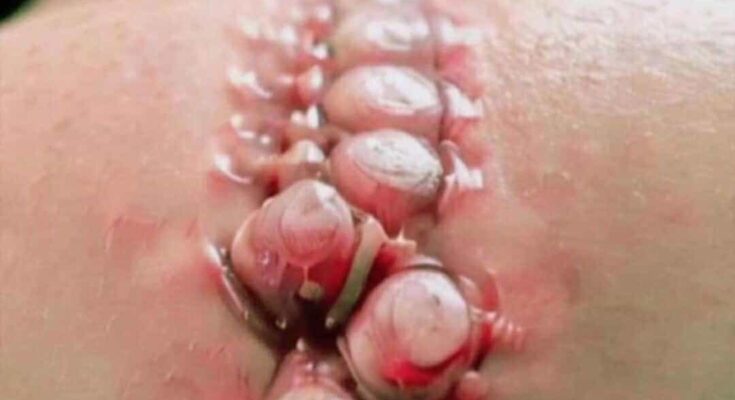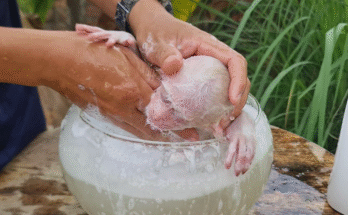Quick summary: Acne is a very common skin condition caused by blocked hair follicles, excess oil, bacteria and inflammation. Most cases get better with topical care and lifestyle changes; moderate-to-severe acne may need prescription medicines or procedures. This guide explains how acne forms, what it looks like, safe treatment options, and when to see a skin specialist.
What is acne?
Acne (acne vulgaris) happens when hair follicles (pores) become clogged with oil (sebum) and dead skin cells. That blockage, together with colonization by skin bacteria (Cutibacterium acnes) and the body’s inflammatory response, creates the different lesion types we recognize as acne. These four processes — too much sebum, abnormal cell shedding, bacterial colonization, and inflammation — explain most acne cases.
Common causes & everyday triggers
- Hormones: Androgens in puberty (and in adults) increase sebum production and are a major driver. AAFP
- Genetics: Family history often predicts acne tendency. AAFP
- Skin products & medications: Heavy (comedogenic) cosmetics, oily hair products, and some medicines can worsen acne. American Academy of Dermatology+1
- Diet & lifestyle: Evidence suggests high-glycemic diets and some dairy (especially skim milk) can modestly increase acne risk in some people — diet can be a factor but is not the only cause. PMC+1
- Stress and poor sleep may worsen existing acne but aren’t primary causes. American Academy of Dermatology
Symptoms & types of acne

Common lesion types:
- Comedones: blackheads (open) and whiteheads (closed).
- Inflammatory lesions: papules (small red bumps) and pustules (pus-tipped).
- Nodules & cysts: deep, painful lumps that can scar.
Where it appears: face, chest, upper back and shoulders. If lesions are deep, widespread, or scarring, that signals more aggressive disease that often needs specialist care. Mayo Clinic+1
How acne is diagnosed
Diagnosis is usually clinical — a doctor examines the skin and asks about duration, triggers, prior treatments, and impact on mood or daily life. For adult women, the clinician may ask about menstrual cycles, recent pregnancies, or medications. No routine blood test is required unless there’s a hormonal concern or unusual presentation. Mayo Clinic
Treatment overview — from gentle to stronger
Goal: reduce oil, normalize shedding, reduce bacteria, and calm inflammation. Treatments are tailored to severity.
Mild acne (few comedones, small papules)
- Topical therapy: benzoyl peroxide (OTC 2.5–10%), topical retinoids (adapalene, tretinoin), azelaic acid, salicylic acid or topical antibiotics used appropriately. Use non-comedogenic moisturizers and sunscreens. Mayo Clinic+1
Moderate acne (inflammatory lesions, more widespread)
- Combination topical therapies (retinoid + benzoyl peroxide) ± short courses of oral antibiotics (doxycycline, minocycline) for inflammatory control. Antibiotics should be used for the shortest effective period and combined with topical agents to reduce resistance. American Academy of Dermatology+1
Severe, scarring, or treatment-resistant acne
- Oral isotretinoin (very effective) is indicated when scarring or major psychosocial impact is present or when other therapies fail. Important: isotretinoin is strongly teratogenic (causes severe birth defects) and requires strict pregnancy prevention programs (iPLEDGE in the U.S.) and close monitoring. Discuss benefits and risks thoroughly with a dermatologist. PubMed+2Mayo Clinic+2
Hormone-driven acne in women
- Combined oral contraceptives and spironolactone are effective options for adult women with hormonal acne (after discussion of risks and monitoring). American Academy of Dermatology+1
Procedures and office treatments
- Comedone extraction (by a professional), intralesional steroid injections for large nodules, chemical peels, and certain laser/light therapies can help in selected cases. These are adjuncts — not replacements for medical therapy. American Academy of Dermatology+1
Self-care & prevention (practical tips)
- Wash gently — no more than twice daily with a mild cleanser; avoid scrubbing. nhs.uk
- Use non-comedogenic makeup and sunscreens. American Academy of Dermatology
- Avoid popping or picking pimples — that increases risk of scarring and infection. nhs.uk
- Be patient: topical therapies often need 8–12 weeks to show benefit. Continue as directed. Mayo Clinic
When to see a doctor (or dermatologist)
- Lesions are painful, widespread, cystic, or leaving scars.
- Acne is affecting sleep, work, school, or causing anxiety/depression.
- Over-the-counter care hasn’t helped after several months.
A dermatologist can prescribe combined regimens, consider hormonal testing, or discuss isotretinoin when appropriate. PubMed+1
Short FAQs
Q: Will acne go away for good?
A: Many people improve after adolescence, but adult acne is common. Effective treatment exists — early treatment reduces scarring risk. AAFP
Q: Is washing more often helpful?
A: No — overwashing irritates skin and can worsen acne. Gentle twice-daily cleansing is recommended. nhs.uk
Q: Does chocolate cause acne?
A: No single food causes acne, but diets high in sugar/refined carbs and some dairy have been associated with worse acne in studies. PMC
Doctor’s quick action plan (what to do today)
- Start a gentle cleanser and a benzoyl peroxide product (2.5%) nightly if you have mainly pimples/whiteheads. Mayo Clinic
- Avoid picking and switch to non-comedogenic cosmetics. American Academy of Dermatology
- If you have deep nodules, scarring, or emotional distress from acne — book a dermatology consult. PubMed
- If prescribed antibiotics, use them only in combination with topical agents and for the shortest effective time. American Academy of Dermatology
Important disclaimer
This article is educational and not a personal medical consultation. For personalized diagnosis and treatment, speak with a licensed healthcare professional or dermatologist.



